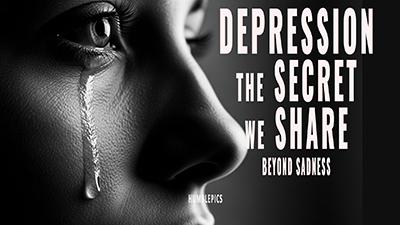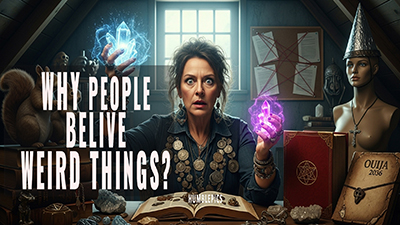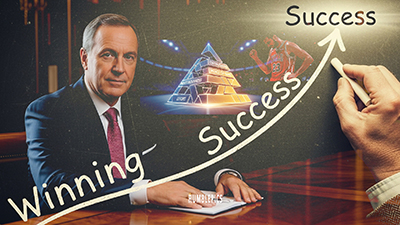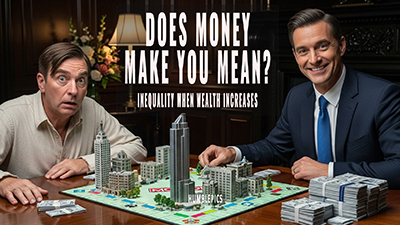We often understand profound states of being through art. Emily Dickinson, in language, described depression as a “Funeral, in my Brain,” and Goya captured it in an image. Half the purpose of art is describing such iconic states. I used to think I was tough—the kind of person who could survive extreme hardship.
The opposite of depression is not happiness, but vitality. And vitality seemed to seep away from me. Everything felt like too much work. I would see the flashing red light on my answering machine and dread the “lot of people that is to have to call back”. Even having lunch—getting the food, putting it on a plate, cutting it up, chewing it, and swallowing it—felt like “the Stations of the Cross”.
One of the most confusing parts of depression is that you know it’s ridiculous while you are experiencing it. You know most people manage to eat lunch or take a shower without it being a monumental task, yet you remain unable to figure out a way around the illness’s grip. I began to feel less, think less, and do less; it was a kind of nullity.
Then the acute anxiety arrived. If I were told I had to be depressed for a month, I could endure it knowing it would end, but if I were told I had to have acute anxiety, I “would rather slit my wrist than go through it”. This anxiety was a sensation of being afraid all the time, lasting six months, like walking and slipping but having that terrifying half-second sensation stretch endlessly.
It was at this point that I began thinking that being alive was simply too painful, and the only reason not to kill myself was to avoid hurting other people. Finally, I woke up one day, convinced I’d had a stroke. I lay frozen in bed, staring at the telephone for four hours, thinking, “Something is wrong and I should call for help,” but unable to reach out. Luckily, the phone rang; it was my father, and I managed to tell him, “I’m in serious trouble. We need to do something”.
The next day, my treatment—medications and therapy—began. This started an intense reckoning: If I wasn’t the tough person I always thought I was, then who was I?. I wrestled with whether medication made me more fully myself or someone else. Even with access to good treatment and an objectively nice life, I emerged and relapsed, again and again, until I understood that ongoing medication and therapy were necessary.
I questioned if it was a chemical or psychological problem, needing a chemical or a philosophical cure. Eventually, I understood that we are not advanced enough in either area for a full explanation, and both cures play a role. Depression is so “braided so deep into us” that separating it from our personality and character is impossible.
We must recognize the burden of this illness. I discovered that depression is the “family secret that everyone has”. The widespread mutual secrecy is burdensome. I once met a married couple who were each hiding the same medication in two different spots in the same bedroom. Silence about depression, unfortunately, only makes the depression worse.
One of the most insidious aspects of depression is how it distorts reality. You don’t feel like you’ve put on a “gray veil” of a bad mood; instead, you feel the veil of happiness has been removed, and “now you’re seeing truly”. But the truth lies. Depressed people often exhibit delusional perceptions (“No one loves me”) and unsettling insights (“No matter what we do, we’re all just going to die in the end”). It makes you think that what is truly extraordinary is how most of us know these existential questions, but they don’t distract us from, say, deciding what to have for breakfast.
As I explored recovery, I changed my mind about treatment. I realized that since depression is an illness of how you feel, if a treatment makes you feel better, “then it’s worked”. This is true even if the treatment is unorthodox, such as making “little things from yarn”.
I sought to understand what creates resilience. I found that people who try to deny their experience—who shut out the depression and refuse to look at it—are ironically the most enslaved by it. Shutting out depression strengthens it. The people who fare better are those who are able to tolerate the fact that they have this condition.
Frank Russakoff, who suffered terribly but successfully underwent a cingulotomy (brain surgery), wrote that he was grateful for his experiences; they taught him about love and strengthened his relationships with his parents and doctors. Maggie Robbins, a poet and psychotherapist, realized that her needs—the things she needed from others—turned out to be her “greatest assets” because she learned to give those things herself. Valuing one’s depression doesn’t stop a relapse, but it makes the prospect and the relapse itself easier to tolerate.
I have found a way to love my depression. It taught me how large an emotion can be and that emotion can be more real than facts. This experience has allowed me to experience positive emotion in a more intense and focused way. While I hated being depressed, I love it now because it forces me to “find and cling to joy”.
The opposite of depression is vitality, and though I still have sad days, my life is vital. Each day, I decide—sometimes gamely, sometimes against reason—to “cleave to the reasons for living,” and that, I believe, is a “highly privileged rapture”.
Source: Based on Andrew Solomon’s studies



